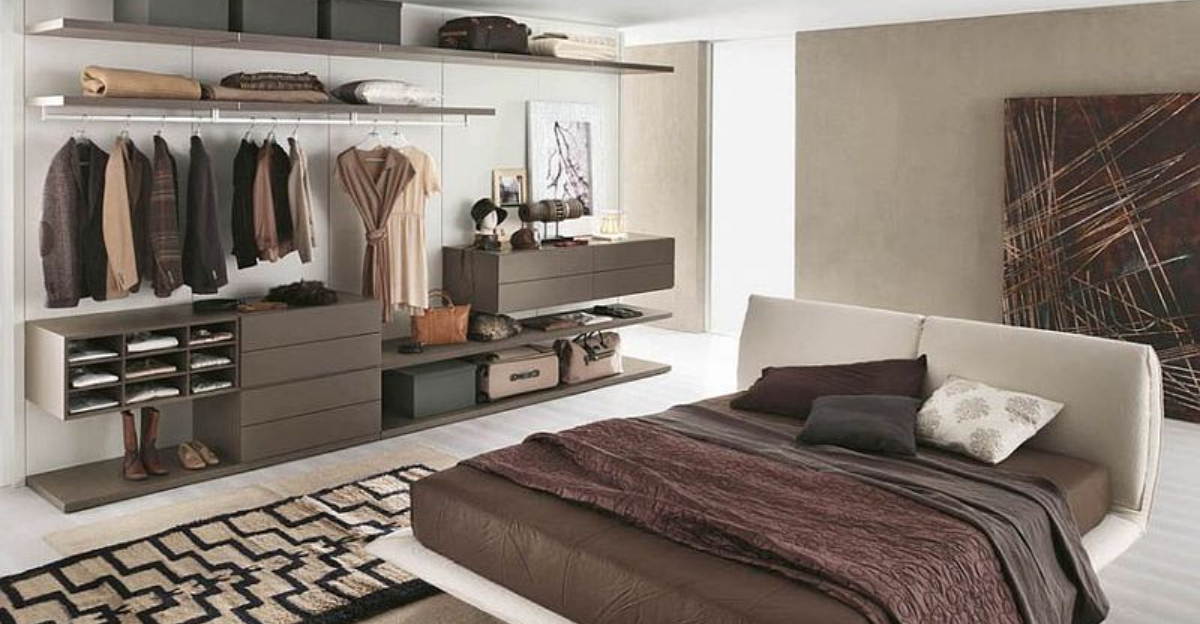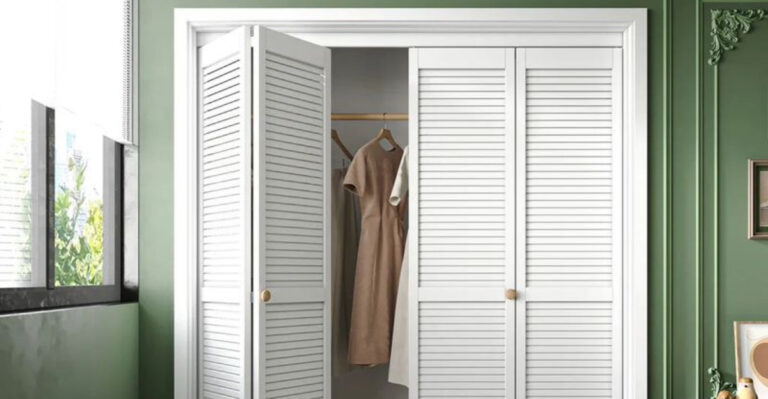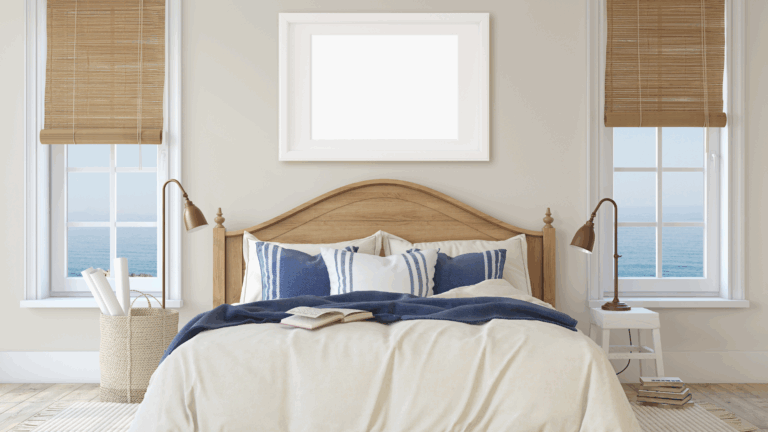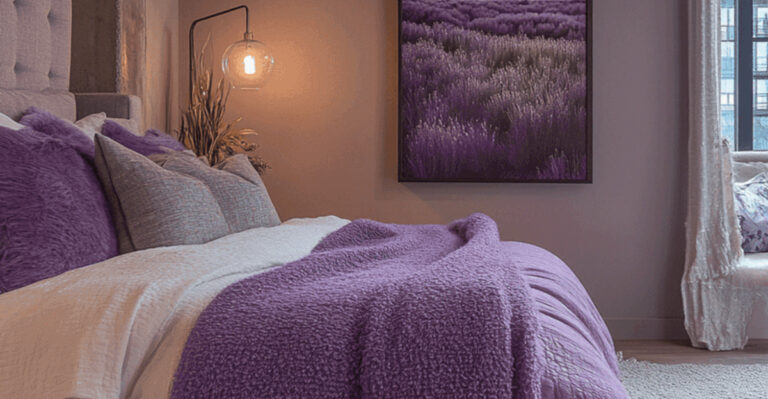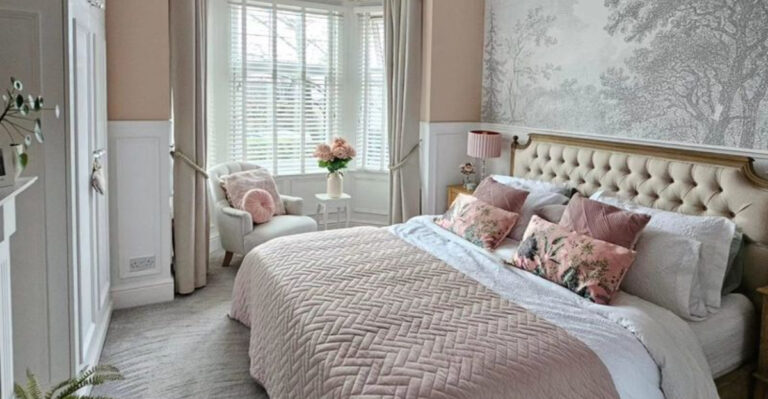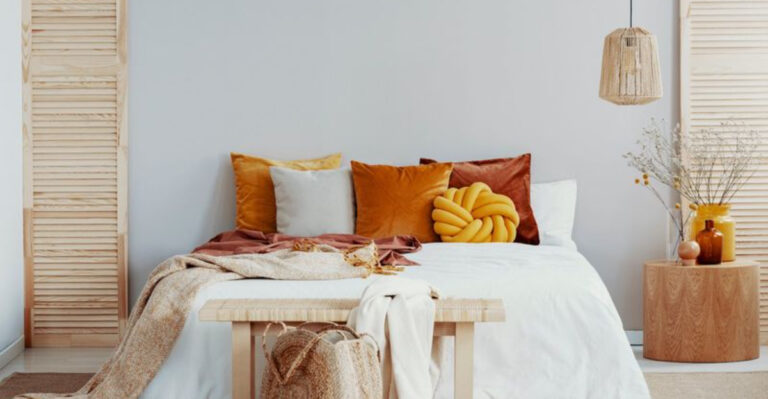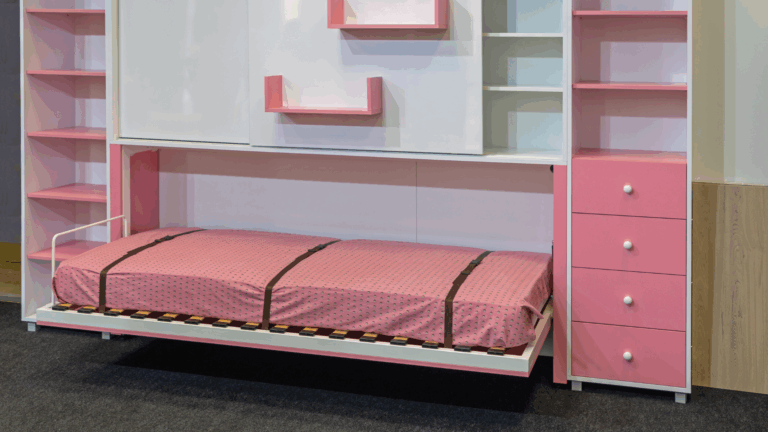15 Reasons Modern Bedrooms Are Ditching Doors For Open Closets
Open closets are revolutionizing bedroom design across stylish homes everywhere. Removing those bulky closet doors creates breathing room and transforms your wardrobe into a functional display.
It’s a bold design choice that combines practicality with aesthetic appeal, letting your carefully curated clothes collection become part of your bedroom’s visual story.
1. Visual Breathing Room
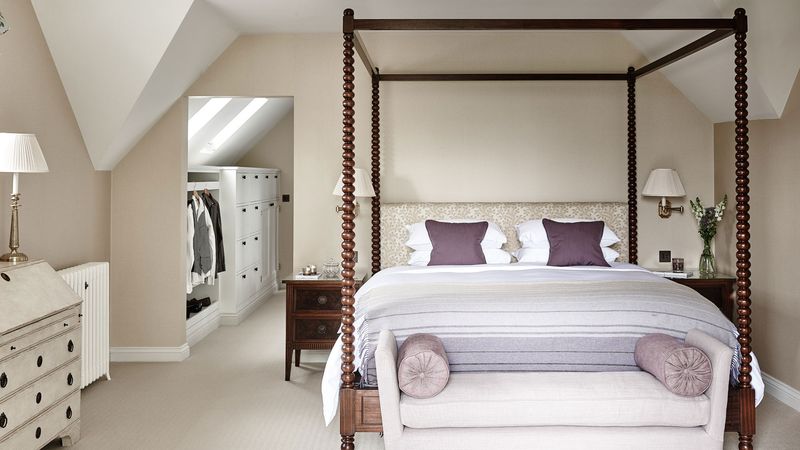
Cramped bedrooms instantly expand when closet doors disappear. The psychological effect is immediate – walls seem to retreat and ceilings lift higher.
Without door-swing clearance eating up precious floor space, rooms feel significantly larger. Even modest-sized bedrooms gain an airy quality that transforms the entire sleeping space into something more luxurious and intentional.
2. Accountability Closets
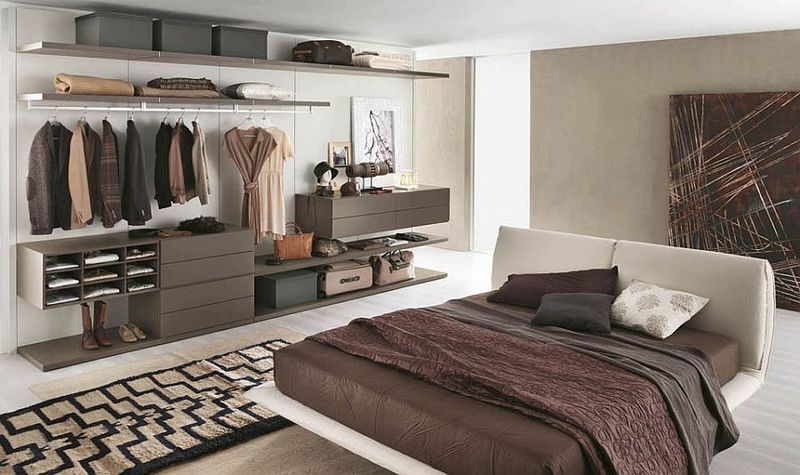
Messy closets can no longer hide behind closed doors. Open storage systems force a reckoning with shopping habits and organization skills.
Marie Kondo would approve – visible clothing collections demand curation. Many converts report buying fewer, better pieces and finally confronting forgotten garments lurking in dark corners. Impulse purchases decline when everything must earn its visible spot.
3. Light Flow Maximizers
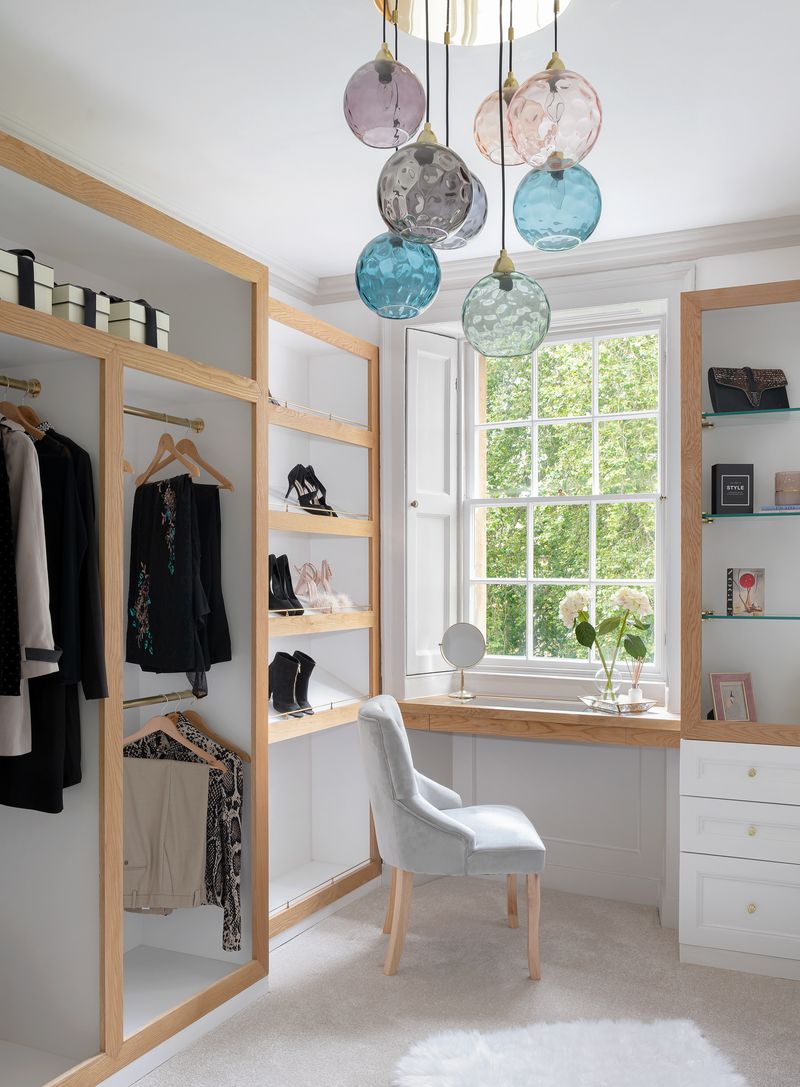
Natural light becomes currency in small spaces. Removing bulky door structures allows sunbeams to travel unobstructed through bedrooms.
Windows opposite closets now cast light that bounces off clothing, creating subtle color plays throughout rooms. Morning routines transform when getting dressed in actual daylight instead of artificial bulbs. Even evening ambiance improves as lamps illuminate previously shadowed corners.
4. Boutique Bedroom Experience

High-end hotel aesthetics arrive home when clothing becomes art. Curated garment collections transform into personal galleries that evolve with seasons and moods.
Fashion-forward homeowners arrange outfits like retail displays, creating visual interest against bedroom walls. Favorite pieces become statement decor – that vintage kimono or hand-tailored suit jacket finally gets admiration beyond wearing occasions.
5. Conversation Starter Wardrobes
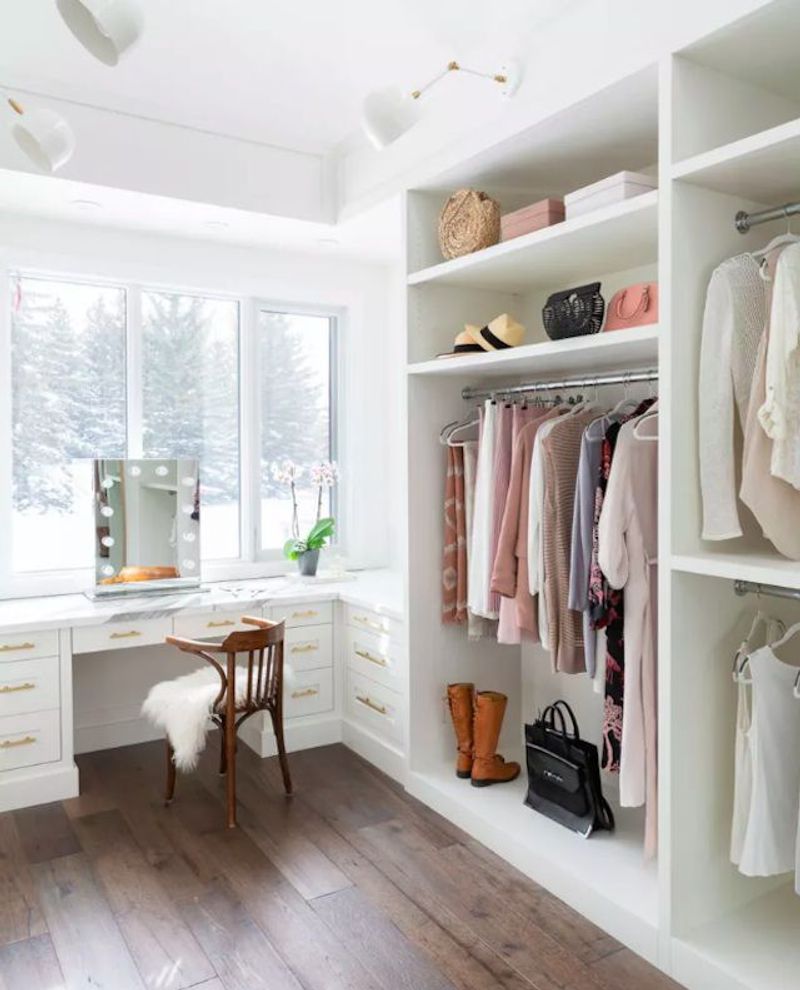
Guests inevitably comment on visible clothing collections. Open closets spark discussions about sustainable fashion, capsule wardrobes, and personal style evolution.
Unlike hidden storage, exposed systems reveal personality through fabric choices and organizational methods. One homeowner reported her vintage concert t-shirt collection becoming an unexpected focal point during gatherings.
6. Morning Routine Streamliners
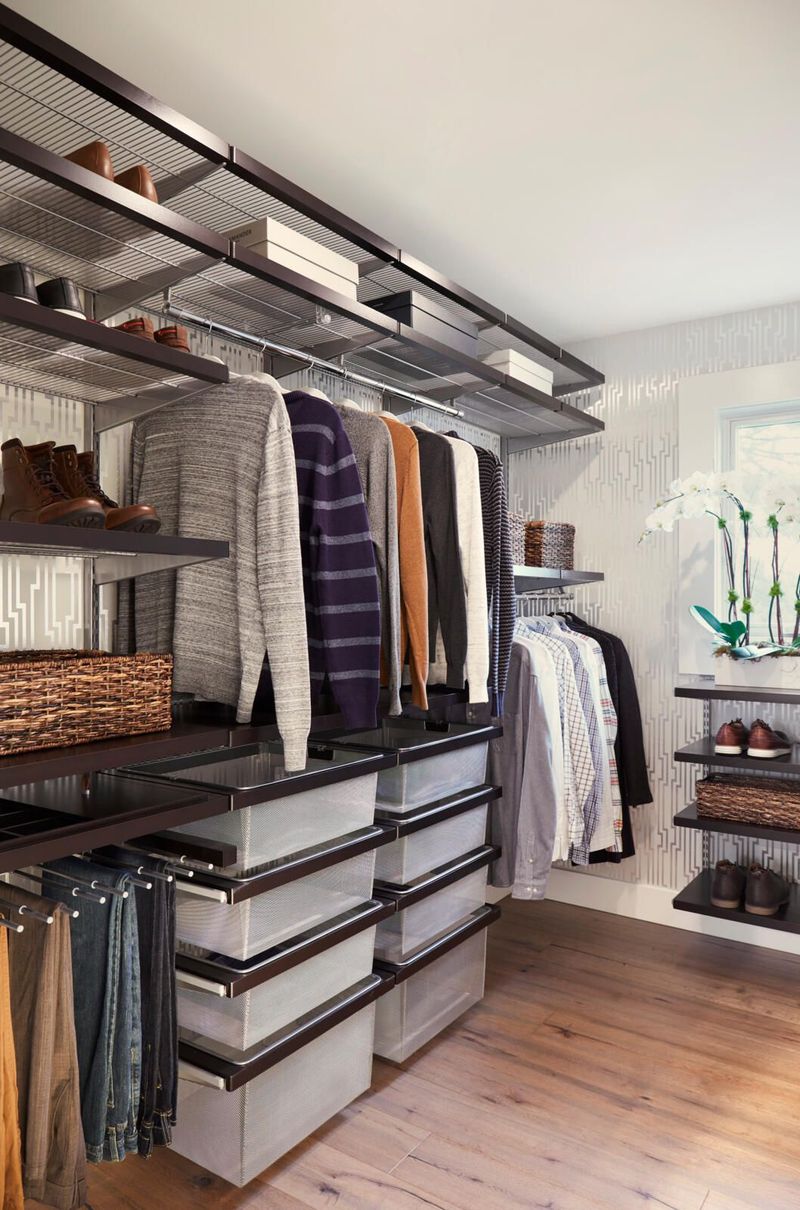
Decision fatigue melts away when outfit options remain visible. Eliminating door-opening steps creates smoother morning transitions.
Parents report children develop independence faster with accessible clothing. Adults appreciate simplified rushed mornings – grabbing visible options without fumbling with handles. Outfit planning becomes intuitive when everything remains in sight, allowing for spontaneous combinations previously overlooked behind closed doors.
7. Budget-Friendly Renovations
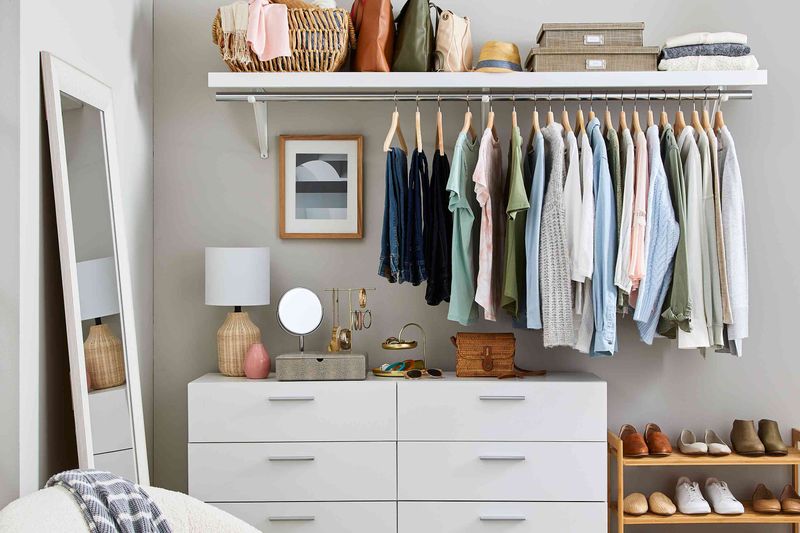
Removing doors costs nothing while adding architectural interest. Instant modernization happens when dated bifolds or sliding doors disappear.
Budget-conscious renovators stretch dollars by investing in attractive organizational systems rather than expensive door replacements. Simple shelving transforms basic box closets into custom-looking storage solutions.
8. Accessibility Champions
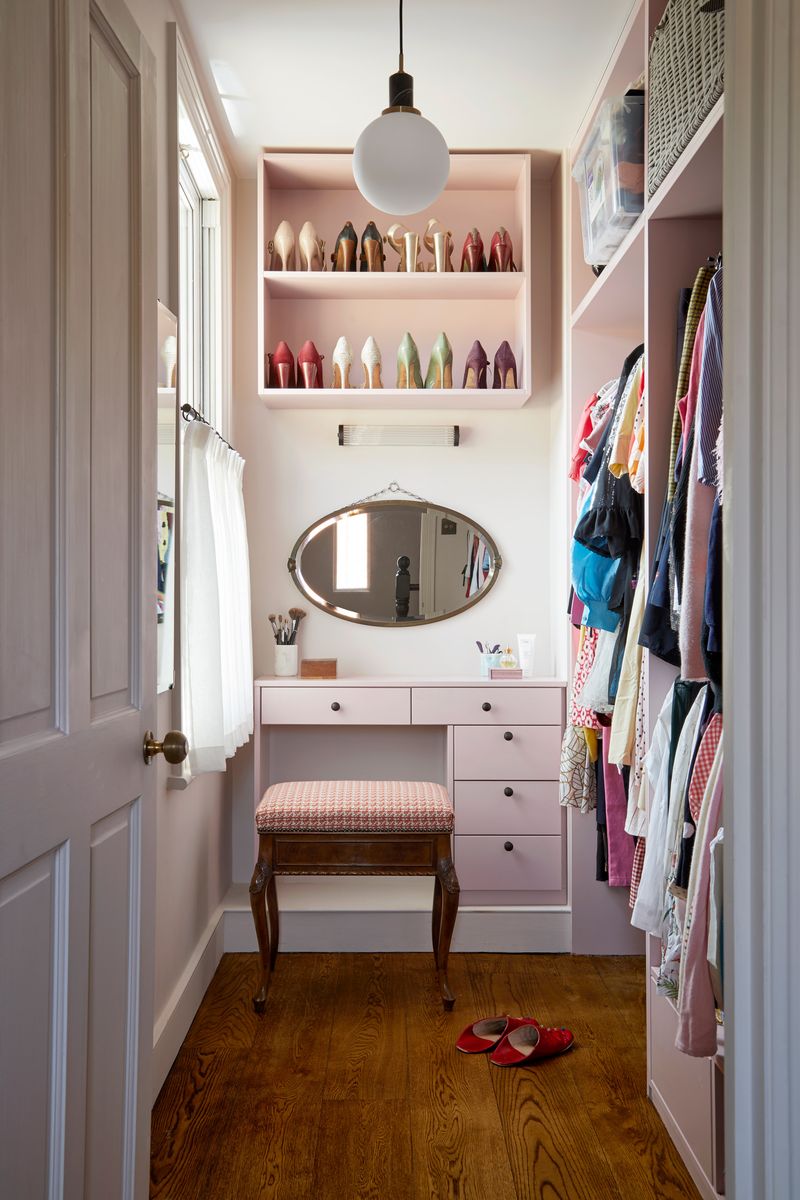
Mobility challenges disappear with barrier-free closet access. Wheelchair users gain unobstructed pathways to clothing without navigating awkward door clearances.
Aging-in-place renovations increasingly feature open storage solutions. Children and shorter adults appreciate reaching items without door manipulation. Even temporary mobility issues become less frustrating when getting dressed doesn’t involve navigation obstacles during recovery periods.
9. Space-Saving Solutions
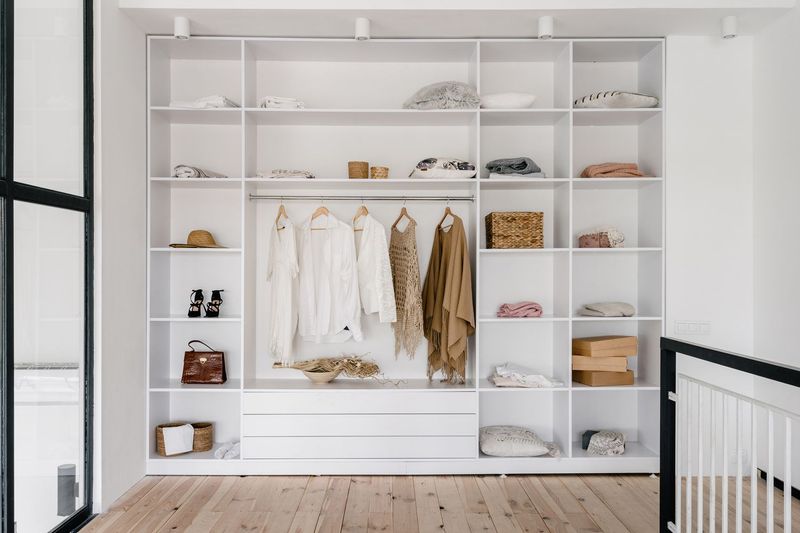
Closet doors require clearance that many modern apartments simply can’t spare. Sliding versions need wall space, while swing doors demand floor clearance.
Open closets reclaim this wasted area for furniture placement or movement pathways. Tiny homes and micro-apartments maximize every inch when door-swing zones disappear. Even spacious bedrooms benefit from improved furniture arrangement options when door clearances no longer dictate layout possibilities.
10. Humidity Regulators
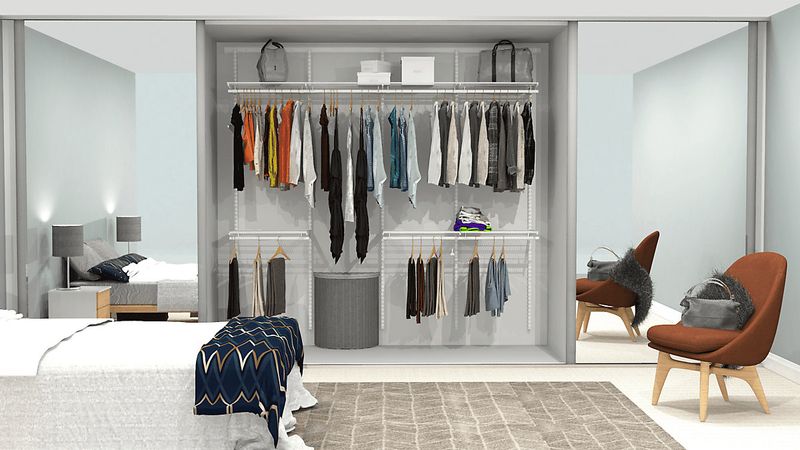
Mildew and musty odors thrive in enclosed closets. Airflow dramatically improves when doors disappear, preventing moisture buildup around clothing.
Seasonal garments remain fresher between wearings. Delicate fabrics benefit from improved air circulation rather than stagnating in closed environments. Even shoes last longer when allowed to properly dry between uses instead of developing funky odors behind closed doors.
11. Seasonal Mood Shifters

Visible clothing collections change with seasons, automatically refreshing bedroom aesthetics. Summer’s bright linens and winter’s rich wools create evolving color stories throughout years.
Forward-thinking homeowners plan seasonal rotations like gallery installations. Spring pastels brighten spaces after winter’s heavy textures retreat to storage boxes. Fall’s burnt oranges and deep burgundies emerge like clockwork, transforming bedroom moods without additional decorating efforts.
12. Relationship Savers

Squeaky hinges and slamming doors disappear from relationship friction points. Open closets eliminate early-morning or late-night disturbances when partners operate on different schedules.
Shared bedrooms function more harmoniously without door-related noise. Couples report fewer frustrations when neither partner accidentally blocks access with partially open doors. Even roommate situations improve when closet territories remain clearly defined without door barriers creating artificial boundaries.
13. Fashion-Forward Flexibility
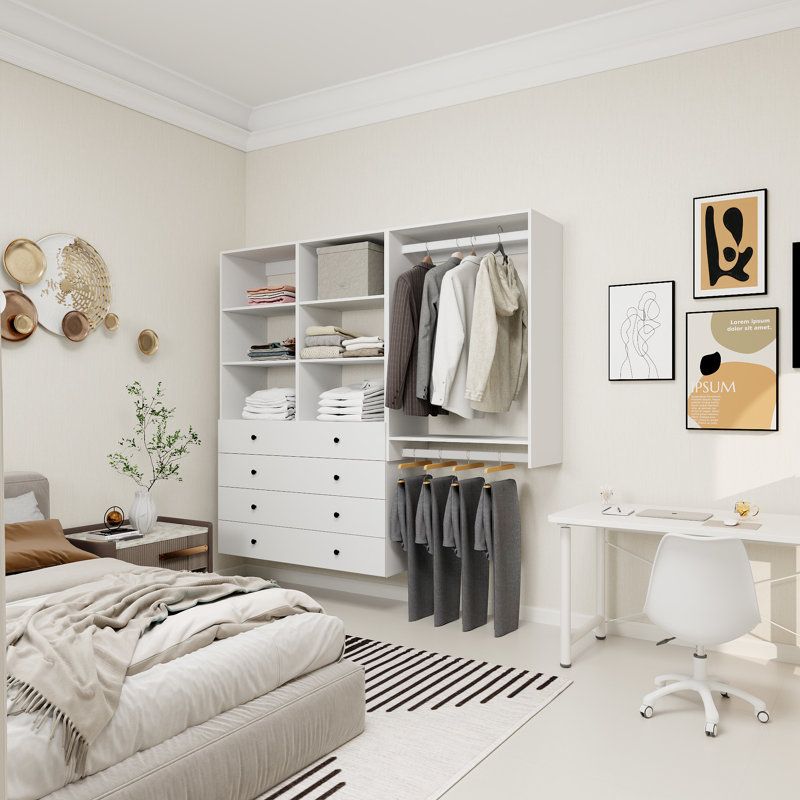
Traditional closets lock homes into fixed storage configurations. Open systems adapt as clothing collections evolve throughout life phases.
Adjustable shelving accommodates changing needs – from maximizing hanging space during business career years to emphasizing folded storage during casual retirement phases. Growing children benefit from systems that transform from toddler cubbies to teen clothing displays without major renovations.
14. Mindful Consumption Motivators

Constantly visible possessions inspire mindful consumption habits. Overflowing racks provide immediate feedback about shopping patterns and excess.
Minimalism flourishes when acquisitions remain on display rather than hidden away. Many homeowners report naturally gravitating toward capsule wardrobes after switching to open storage. Quality over quantity becomes the guiding principle when each item must earn its visible spot in limited display space.
15. Design Statement Makers
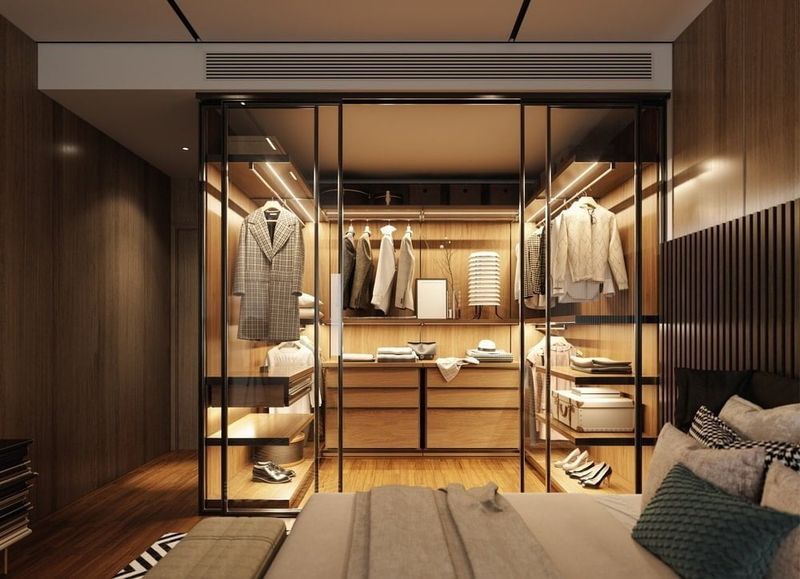
Architectural interest explodes when standard closets transform into custom-looking alcoves. Previously boring walls become focal points through creative storage solutions.
Designer-worthy results emerge from simple door removal paired with thoughtful organization. Painted backwalls create dramatic backdrops for clothing collections. Even lighting options expand – strip LEDs or small spotlights highlight favorite pieces, creating gallery-like displays impossible behind traditional doors.

